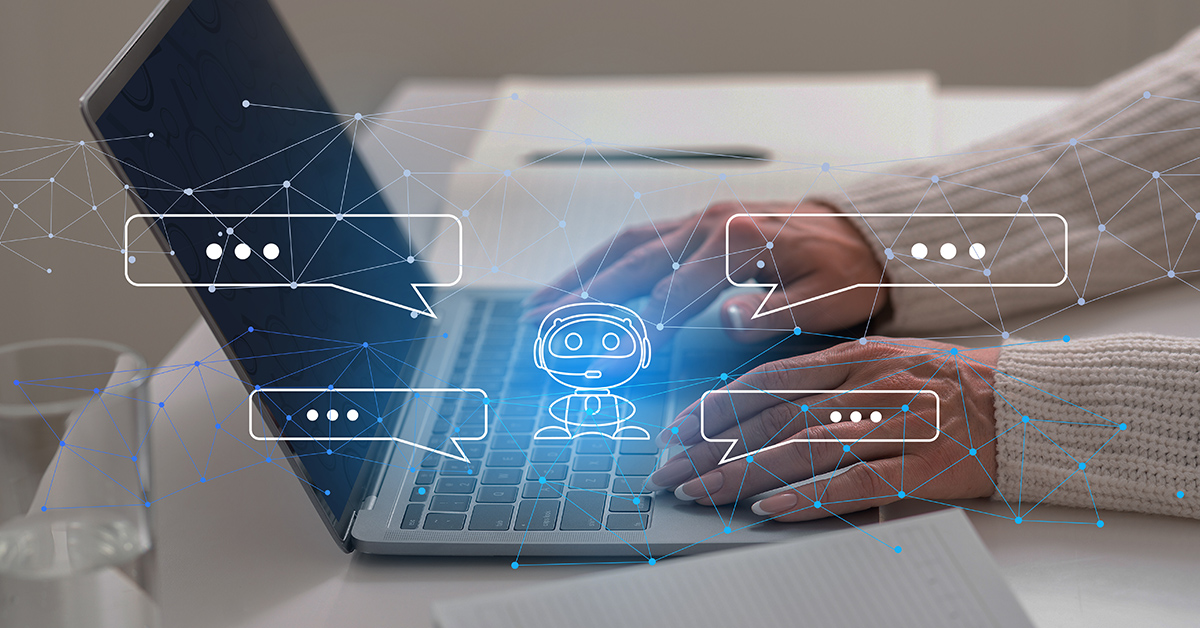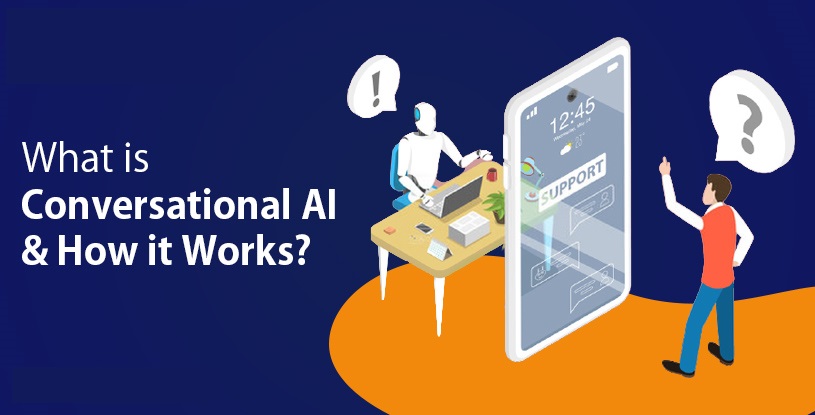Customer Support: The Evolution of Conversational AI

5 min read
Table of Contents
The evolution of conversational AI in customer service has been a transformative journey, driven by advancements in artificial intelligence and natural language processing technologies.
The new tool not only allows for more successful calls, but it also has the potential to represent a paradigm shift when compared with systems like Virtual Assistants (VA) and Interactive Voice Response (IVR).
Natural language processing allows systems to converse naturally with customers before asking for a response. It has the ability to learn and adapt based on extensive information about the user, which enables them to get to know the customer better as the conversation progresses. The ability of these systems to create a deeper connection between businesses and customers is the most significant benefit.
Introduction
The evolution of conversational AI has been significant over the past few years, allowing it to develop new capabilities during that time. This new evolution of conversational AI is real. The artificial intelligence within these systems has become more robust, allowing them to initiate conversations in their own right. Additionally, the platforms have also improved over time to understand and resolve tasks that require more advanced skill sets. Some examples of this improvement include shopping for a product and purchasing it from a chatbot application on messaging apps. Advances in these systems have resulted in more streamlined processes and improved customer service efficiency as well.
Learn More about What is Conversational AI?
However, there are still many problems with conversational AI that must be overcome before it can be fully implemented into mainstream customer support operations.
How do we communicate with each other? How do we manage customer support requests on websites and apps that are increasingly being built in this style? Support is growing more and more complex, it is becoming the new norm.
The question becomes: What does this look like for bots, and how will organizations keep up with communication technologies while still providing superior customer service to their users?
Let us see what communication looks like in the future, and how companies can keep up while securing superior service. It’s an informative overview of how it isn’t just changing individual interactions; it’s altering society itself.
Rise of Conversational AI
This is a growing trend. However, there are still many problems with it that must be overcome before it can be fully implemented into mainstream customer support operations.
- The inability to have a meaningful, two-way conversation.
- A lack of response diversity and overall unpredictability.
- The inability to sense emotion leads to unprofessional interactions with customers as well as a lack of empathy for the customer’s concerns or needs.
- Lack of continuity across multiple tasks or platforms, meaning it cannot keep up with changes in the user interface and other variables over time, notably on mobile devices like smartphones and tablets where it is currently most prevalent
- High learning curve for users, especially when it comes to training AI chatbots to better understand human language.
- A lack of Memorization and learning capabilities means that the learning potential is limited.
- Ineffective interrupts in customer interaction, affecting the overall user experience with the technology.
- The inability for customers to customize interactions with machines to suit their specific needs or wants due to a low degree of adaptability in current AI technology
Key Evolution Stages
Human-Robot Interaction
Personalization is altering the nature of business relationships and customers can’t wait for these changes to come their way. Businesses will be able to engage with customers on a more personal level, assuming new forms of human-robot interaction (HRI).
24/7 Availability
Customers are living more and more digital lives. To provide the best possible service, businesses need to be available 24/7. That’s why client support is increasingly moving away from call centers and toward AI-powered chatbots and virtual assistants.
Customer Support
It is an exciting publication that shares information about how it has changed in recent years, its evolution as a whole, what kinds of use cases it can be applied to, and some interesting future prospects on what kind of problems will be conquered by this new technology.
Omnichannel Support
As consumers adapt to the AI-powered customer support tools offered by companies. We see a rise in demand for a seamless and omnichannel experience. The retail industry is leading the way in this digital transformation. Various e-commerce platforms allow users to purchase products while on other digital services.
Customer Retention
With more and more customers preferring to interact with virtual assistants rather than human service agents when having questions about products or services they are interested in, companies have to offer them exceptional service or risk losing them forever.
The Future of Customer Support
Conversational AI will continue to evolve, making interaction with customers easier and more efficient. This will allow businesses to take advantage of the opportunities this technology brings—while foreseeing the potential challenges it may pose down the road. Consumers don’t always appreciate being treated like a number or a set of data points.
Dialog Bots
More sophisticated forms of automated systems realized the limitations of basic chatbots and built on top of them to offer more complex interactions. Everlane’s Adriana Lima Bot is an example of a commercial bot used in-store as part of their customer service agent training program.
Intelligent Agents
Fully automated conversational agents move beyond simple responses by offering human-like conversation toward a goal while learning from users in order to more accurately predict future needs and product preferences.
Conversational Assistants
Advanced conversational AIs that combine advanced natural language processing with machine learning allow users to engage in a deep dialog with their personal assistant without any need for external prompts or reminders.
Conversational Bots
It has the ability to remember and recall information about customers in order to meet their needs. These systems require no training or pre-knowledge of a specific subject area as they can learn on the job.
AI in customer service seems like the latest big thing in a world of rapid progress. It’s been around for a few years now, and it has seen considerable success when implemented effectively. The issues with customer support have largely been solved by developing chatbot applications in both messaging apps and voice assistants. But customer service still requires more work to evolve to the next step: artificial intelligence (AI) and natural language processing.
Revolutionizing Customer Service with Voicebots
It is the most advanced part of AI. As more companies look to embrace this term, they’re finding themselves in the midst of a conversation. Instead of relying on a predefined list of questions that are pre-set and labeled as inputs and outputs, conversations between humans become more fluid and natural. The technology itself has advanced to the point where it allows for these systems to learn from human behavior in order to replicate it with an algorithm. The algorithm can then adapt accordingly to the new user base.
Natural Language Processing (NLP)
In more recent years, chatbots have been able to understand context and also to form their own question from the multiple questions posed by the users. These systems have gained greater independence and can now initiate conversations with users themselves. The most popular chatbot application is the virtual assistant application on messaging apps. This application takes advantage of natural language processing (NLP) to have a meaningful conversation with its users. These applications have improved considerably, allowing them to understand requests or requests from users within a given context.
Conclusion
Complementing the chat, artificial intelligence will find a way to automate even more of our communication, like writing emails and letters, decorating pictures, and creating video presentations.
Complementing the chat, artificial intelligence will find a way to automate even more of our communication, like writing emails and letters, decorating pictures, and creating video presentations. Artificial Intelligence can also help us in finding new ways to have conversations with people we only rarely get in touch with or that simply live far away from us. By taking advantage of AI technologies we can interact with people as close as our desk or solve distance problems by having long conversations on the best small business phone service.
Published: September 20th, 2023
Subscribe to Our Latest Updates
Get monthly product and feature updates, the latest industry news, and more!





